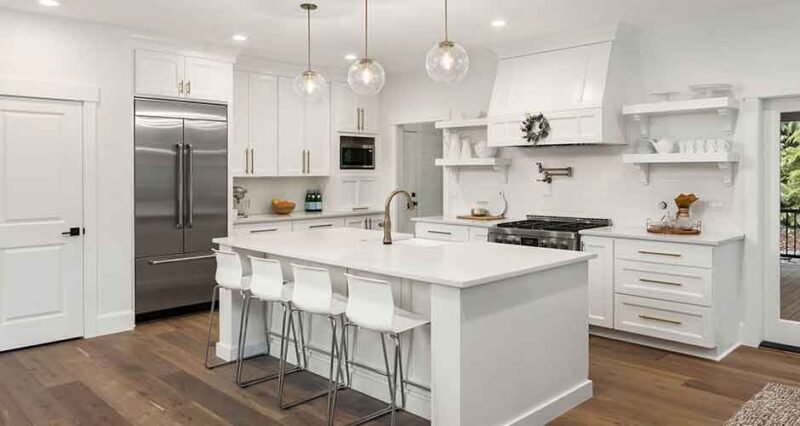
Choosing the right flooring for your kitchen is an important decision that affects both the look and function of the heart of your home. The flooring you choose shouldn’t just be an afterthought even though it’s function is to simply walk on it. A good choice in flooring can make your kitchen more inviting and reflect the atmosphere you want to create.
If you’re doing a kitchen remodel then the first place to look for inspiration is the floor. Once you settle on the right floor, the rest of the design will fall into place. In this article, we will go over several tips to help you decide on the best flooring for your kitchen.
1 – Look for durability
When choosing kitchen flooring, it’s important to pick a material that can handle a lot of use and occasional spills. A durable floor will last longer and look better even under tough conditions.
Laminate flooring is strong and can handle daily use, but you sometimes need to clean up spills right away to avoid damage. American-made vinyl plank flooring is a great choice if you want something that’s both tough and easy to care for. It resists water, stains, and scratches, and you can keep it looking new with simple sweeping and occasional mopping.
Tile flooring is very tough and good for areas that get a lot of foot traffic. It doesn’t stain easily, and cleaning it is usually simple. However, the grout between tiles might need to be sealed regularly to keep it from getting discolored or damaged.
2 – Find your style
Choosing the right flooring involves finding something durable and easy to clean but also looks good in your kitchen. The floor should go well with the colors, textures, and style of your cabinets, countertops, and other kitchen features.
The amount of natural light in your kitchen also affects how the floor looks. Light-colored floors, like soft woods or pale tiles, can make a small kitchen feel bigger and brighter, especially with plenty of natural light. They also don’t show dust and small messes as much as darker floors. However, dark floors can make a space feel cozy and rich.
It’s a good idea to look at floor samples in your kitchen to see how they look with the natural light during the day.
3 – Consider the costs
When selecting kitchen flooring, it’s important to consider both the initial installation costs and the long-term expenses over time. Some flooring options might be more expensive to purchase and install but could offer greater durability and lower maintenance costs, making them more cost-effective over time. For example, tile floors are expensive to buy and install, but they have low maintenance and last for decades or longer.
Also, see if you can install the flooring yourself to cut costs. Laminate and vinyl plank flooring are good choices for DIY because they are designed to easily snap together so you can avoid the expense of hiring professionals for installation.

